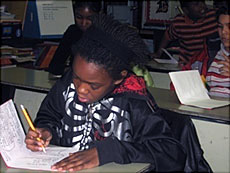Reflection in Service
In this educator mini-course we explore the purpose of reflection and learn a variety of reflection techniques and questions. Learn to engage the hearts and minds of volunteers and activists in order to increase the meaning of any service experience.
After completing this course (about 45 minutes), the learner is prompted to take a bief quiz based on the content. Upon successful completion of this quiz, the learner may request a certificate suitable for a professional development portfolio, or as proof of .75 educational clock hours that can be used toward continuing education credit in most states. Please contact your State Department of Education or school district for specific information. Documentation of the completed courses and copies of the certificate are stored under "My Account" of the Learning to Give website where the learner may access (and print) them at any time.
The learner will
- define reflection as thinking critically about a service experience through meaningful writing, creative expression, and discussion.
- explore a variety of reflection techniques and questions.
- correlate the reflection format to its purpose in the continuum of a service-learning project - before, during, after service.
- reflect on personal motivations, experiences, and benefits of engaging in reflection activities.
Although reflection is often the first thing to go when teachers run out of time on a project or lesson, reflection questions and activities are critical to validating learning by prompting youth to pause and think about what they're learning and why it's relevant to their lives. In this section, we reflect on quotes on the importance and impact of reflection from well-known people.
Reflection plays different roles throughout the service-learning process. This section describes six different roles, or purposes, of reflection and gives examples. Test your comprehension of the roles with six scenarios.
Reflection activities can engage youth in critical thinking throughout the service-learning experience to deepen learning and increase impact. This section shares purposes and examples for reflection before, during, and after service.
This section provides ideas for a variety of reflections. Sometimes reflection is most effective through quiet meditation or personal writing. Other times interacting with others promotes expanded thinking. Mixing up activities so students have both experiences is the most impactful strategy.
This final section of the course gives tips for designing a variety of effective reflection activities and questions that fit your students and the experiences.
This quiz includes four multiple choice questions and one open-ended question. If you get three of the four multiple choice questions correct, you will be prompted to download a certificate of completion.
